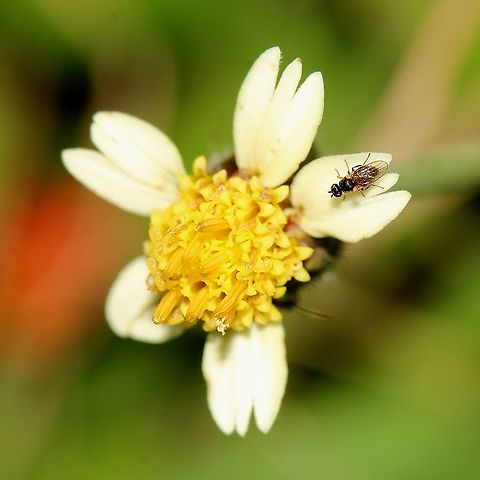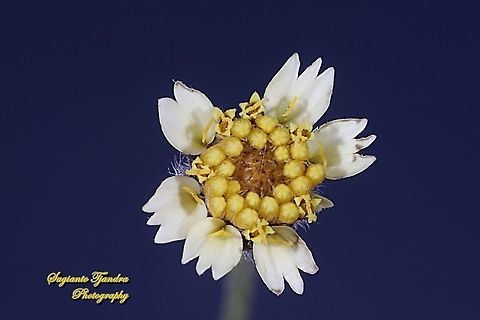
Appearance
The plant bears daisylike yellow-centered white or yellow flowers with three-toothed ray florets. The leaves are toothed and generally arrowhead-shaped. Its fruit is a hard achene covered with stiff hairs and having a feathery, plumelike white pappus at one end. Calyx is represented by scales or reduced to pappus. The plant is invasive in part because it produces so many of these achenes, up to 1500 per plant, and each achene can catch the wind in its pappus and be carried some distance. This plant can be found in fields, meadows, croplands, disturbed areas, lawns, and roadsides in areas with tropical or semi-tropical climates. It is listed in the United States as a Noxious Weed and regulated under the Federal Noxious Weed Act.
Naming
Its common names include coatbuttons and tridax daisy in English, "jayanthi" in Kannada, "cadillo chisaca" in Spanish, "herbe caille" in French, "jayanti veda" in Sanskrit, "Kumminnippacha", "Kurikootticheera", "Muriyampachila", "Odiyancheera", "Railpoochedi, "Sanipoovu", "Thelkuthi" in Malayalam, "bikhalyakarani" in Assamese, "ghamra" in Hindi, "Tridhara" in Bengali, "bishalya karani" in Oriya, "kambarmodi, Jakhamjudi & tantani" in Marathi, "gayapaaku & gaddi chemanthi & balapaaku " in Telugu,"vettukaaya poondu or thatha poo or kinatruppasan " in Tamil, Ghaburi in Gujarati "kotobukigiku" in Japanese and "tīn túkkæ" in Thai.References:
Some text fragments are auto parsed from Wikipedia.